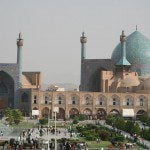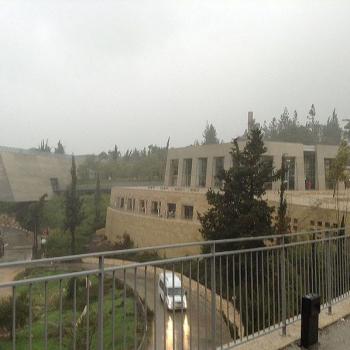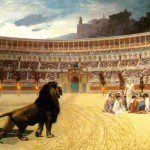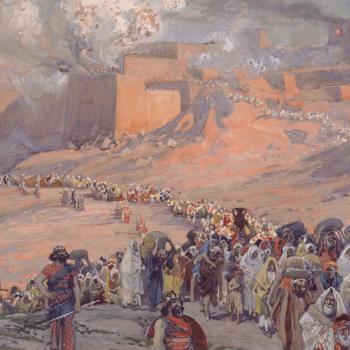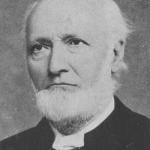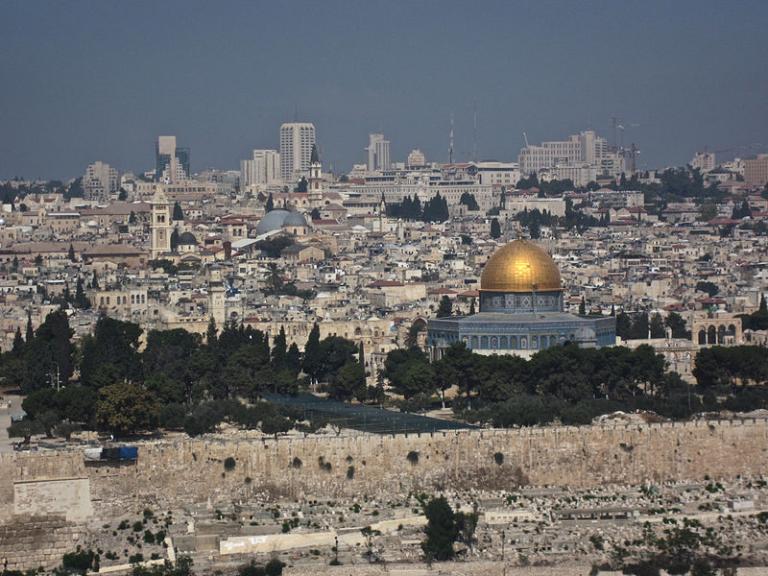
(Wikimedia Commons public domain image)
Some Jews were martyred, some hid in caves and deserts in order to continue to live the commandments, and some—perhaps (understandably) questioning the point of remaining faithful— apostatized. Many simply left, hoping to get away. The dispersion of the Jews, their diaspora, had now begun in earnest. Some of Hadrian’s successors relaxed official measures against Judaism. The situation wasn’t always desperate; there were even times of relative prosperity among the Jews in the Holy Land. For many reasons, however, Jewish emigration from Palestine continued. Yet conditions were often no better elsewhere. And as Christianity gained power within the Roman government, it set about to make sure that Judaism would remain the religion of a second-class people. Throughout the empire, the Jews were deprived of many of the rights of citizenship and were forbidden to proselyte or to intermarry with Christians. Christian mobs, often encouraged by their bishops, harassed and persecuted Jews and destroyed their synagogues.
Things were especially rough for Jews during the fifth and sixth centuries. The office of the Jewish patriarch, for instance, who had presided over the Sanhedrin in the north of Palestine since the fall of Jerusalem, was abolished early in the fifth century. Abolition of the office had been an important aim of Christian persecutors of the Jews for many years, since, as a descendant of David, the patriarch represented both the memory of Jewish nationhood and a hope for its restoration. Anti-Jewish laws were passed in large numbers. Christian mobs attacked Jews and burned their synagogues for the “greater glory” of God and his church, while the government forbade the Jews to rebuild the synagogues that had been destroyed. Even when local governors protested, they were powerless to stop the clergy and the mobs. (Sometimes even the emperor had to back down before the zeal of the bishops.) By the early sixth century, with the coming of the code of Justinian, the bishops actually shared in the legal authority of the civil administrators, and the law directed them to appeal to the emperor if a local governor showed insufficient enthusiasm for persecuting Jews. The Christian population of Palestine surged, while — demoralized, abused, and humiliated — the Jewish population dwindled.
But if Christians seemed to be triumphant in the land of Christ’s birth, their triumph would be short-lived. By the seventh century, the Byzantine Empire had weakened itself to the point of seeming feebleness by endless theological disputes and by the kind of political infighting and treachery that has come to be described in modern times, no matter where it occurs, as “Byzantine intrigue.” It presented an inviting target to ambitious and greedy neighbors—a fact that wasn’t lost on the Sasanian Persian Empire.
At the beginning of the seventh century, the Persians set out on a series of conquests in the Near East. They invaded Palestine in 611 A.D. and their approach ignited a messianic fire among the persecuted Jews of the Holy Land. (From the Jewish perspective, rule by Zoroastrians could hardly be any worse than the reign of Christians.) The Jews rose enthusiastically to assist the non-Christian invaders, who took the city of Jerusalem in 614. As a reward, when the Persians conquered Jerusalem they turned it over to Jewish control. This didn’t last, however, for when the Persian Empire made peace with the Byzantines, the Jews didn’t. The Persians were therefore obliged to fight against their erstwhile allies, and many Jews died. It seemed that they just couldn’t win.
In the meantime, the Persians had carried off the “True Cross” of the crucifixion from the Church of the Holy Sepulchre in Jerusalem. This was one of the holiest relics of Christendom—discovered by St. Helena, the mother of Constantine, after strenuous torture of the local rabbis—and its theft as a Persian trophy virtually guaranteed a Byzantine response, peace treaty or no peace treaty. Sure enough, a new Byzantine emperor by the name of Heraclius soon embarked upon a military buildup with the intention of renewing war against the Persians. In the spring of 622, he launched a new campaign to retake the territory that had been lost. He was largely successful, and in 629 A.D. he reentered the holy city of Jerusalem. The Persians had by now surrendered to Heraclius the remnants of the “True Cross,” and the high point of the Emperor’s visit to Jerusalem was to be the ceremonial restoration of those relics to their original resting place. The Jews, terrified at the possibility of retribution for their collaboration with the Persians, begged Heraclius for mercy. To his credit, he granted it. To their eternal shame, however, the local Christian clergy demanded that Heraclius punish the Jews, and, when he protested that he had promised mercy, they told him that perjury in cases like this was no sin. Indeed, the priests assumed responsibility for any sin that might be involved and declared a special fast to atone for it in advance.[1] On the advice of the clergy, therefore, the emperor ordered the expulsion of Jews from Jerusalem and its surrounding areas. Many Jews were executed, and others fled to the desert or into the territory of the relatively tolerant Persians. A campaign was even launched to convert the Jews by force to the religion of Jesus.
But, yet again, the Christians weren’t to savor their victory for long. The Persians were not, it turned out, the greatest threat to Christian dominance in the Holy Land. Another power was rising that would destroy the Persian Empire, deal a critical blow to Zoroastrianism, and seriously wound the Byzantines within only a few years. A vast transformation was underway that would give almost all of the world’s Jews the chance to live under non-Christian rule. A virtually irresistible religious and political force would seize control of many of the Christian world’s greatest centers of thought and piety. It would permanently remove such illustrious cities as Alexandria and Aleppo, Antioch and Jerusalem from Christian control and would make into foreign territory the regions of North Africa that had produced Tertullian, Augustine, and others among the greatest thinkers of the early Latin Church. Yet the new empire that was taking initial shape in distant, forgotten Arabia was one that nobody had anticipated. It was one that few, if any, were likely even to have imagined. Until some time after the Arabs had taken their first unplanned steps toward world empire, leaders of the great powers quite pardonably took no notice. If they had looked in that direction—from which, as they thought, nothing important had yet come—they would, like Elijah’s servant, have seen on the horizon only “a little cloud . . . like a man’s hand.”[2] Nothing to worry about.
[1] Compare Matthew 27:25, where the Jews, seeking the death of Jesus, cry out, “His blood be on us.” The Coptic church of Egypt continued to celebrate this fast for several centuries afterward.
[2] 1 Kings 18:44.
Posted from Park City, Utah



